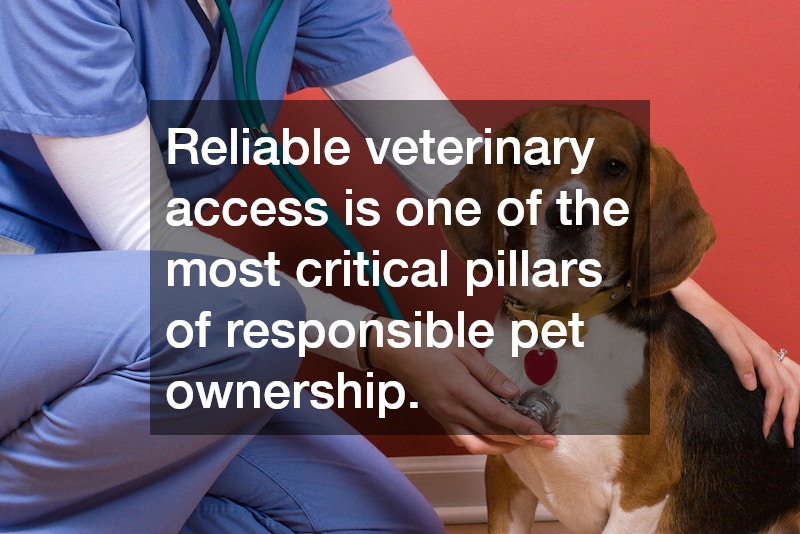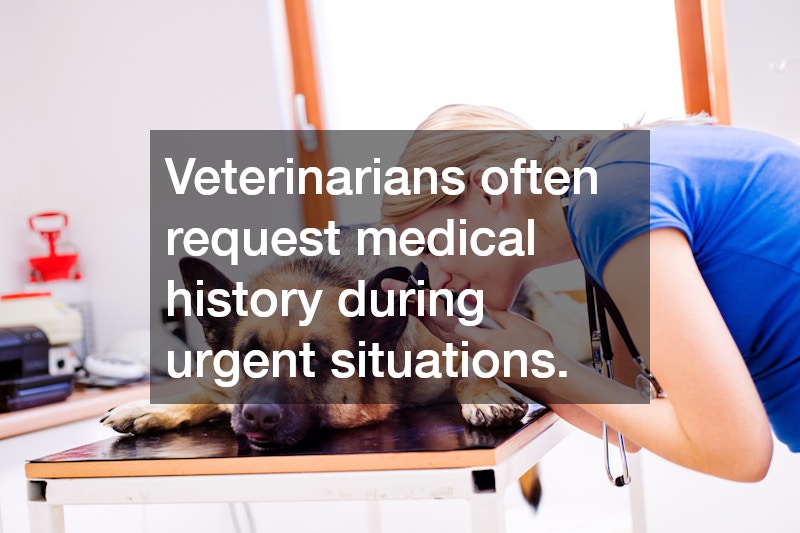
Essential Resources Every Pet Owner Should Know About

Owning a pet brings immense joy, unconditional love, and daily companionship. But it also brings responsibility—responsibility that requires planning, preparation, and a strong support system. Today’s pet owners manage everything from routine health care and emergency medical needs to training, housing, grooming, and end-of-life decisions. With so many moving parts, it’s easy to feel overwhelmed or unsure where to begin.
Understanding the resources available to you makes pet ownership smoother, safer, and far more enjoyable. The right connections and services empower owners to make smart decisions, reduce stress, and provide the highest quality of care. Whether you’re new to owning pets or have years of experience, having a reliable set of tools, providers, and community connections helps ensure your pets thrive at every stage of their lives.
This guide walks you through the essential resources every pet owner should know about, with practical tips and real-world advice you can use immediately.

Build a Reliable Veterinary Care Network
Reliable veterinary access is one of the most critical pillars of responsible pet ownership. Whether your animal is young, aging, healthy, or dealing with chronic conditions, consistent medical care ensures early detection of health issues and supports long-term well-being.
One behind-the-scenes resource that many pet owners don’t realize exists is a veterinary relief staffing agency. These agencies help veterinary clinics remain fully staffed even when regular veterinarians are on vacation, out sick, or experiencing high patient volume. Because of this added support, pet owners benefit from shorter appointment wait times, stable clinic hours, and reliable medical availability.
When building your veterinary care network, consider the following:
Choose a Primary Veterinarian You Trust
Your main veterinary team should be familiar with your pet’s medical history, temperament, allergies, and long-term needs. Look for:
-
Good communication and willingness to explain diagnoses
-
Clear pricing structures
-
Modern equipment and clean facilities
-
Emergency protocols
Establish a Backup Clinic
Even trustworthy clinics may not always be able to accommodate last-minute needs. Keeping an alternative clinic in mind prepares you for unexpected situations involving:
-
Minor illnesses
-
Sudden injuries
-
Prescription refills
Keep Records Organized
Veterinarians often request medical history during urgent situations. Maintain digital folders or printed veterinary files so you can provide accurate information anytime.
A strong veterinary network prevents emergencies from turning into crises and gives you peace of mind knowing that professional help is always within reach.

Know Where to Go When Emergencies Happen
Even the healthiest pets can experience sudden injuries or illnesses. Understanding when and where to seek immediate help can protect your pet’s life. This is where knowing your local pet urgent care options becomes essential.
Unlike full emergency hospitals, pet urgent care centers are ideal for situations that require timely medical attention but are not life-threatening. They help bridge the gap between regular daytime veterinarians and more expensive emergency facilities.
When to Use Urgent Care
Urgent care clinics are ideal for:
-
Minor to moderate injuries
-
Vomiting or diarrhea lasting more than a few hours
-
Ear infections
-
Fever
-
Abscesses
-
Minor allergic reactions
-
Cuts that require cleaning or small stitches
When to Go to an Emergency Hospital
Life-threatening symptoms require immediate emergency medical help. These include:
-
Difficulty breathing
-
Seizures
-
Major trauma
-
Toxic ingestion
-
Uncontrolled bleeding
-
Collapse or unconsciousness
How to Prepare for Emergencies
Preparation eliminates panic. Every pet owner should:
-
Save two or three care facilities in their phone contacts
-
Keep a pet first-aid kit at home
-
Know your pet’s weight for medication dosing
-
Store a folder with vaccination records and medical history
Urgent care facilities play a crucial role in protecting your pet’s well-being, and knowing where they are before you need them can make all the difference.
Prepare for End-of-Life Care With Compassion
End-of-life planning is one of the most emotional aspects of pet ownership. Although difficult, preparing early ensures your pet’s final moments are peaceful, dignified, and full of love. Professional pet euthanasia services provide compassionate support during this challenging time, offering both at-home and in-clinic options to meet the needs of pets and their families.
Signs It May Be Time
Consider end-of-life care when your pet experiences:
-
Chronic pain not relieved by medication
-
Loss of mobility
-
Inability to eat or drink normally
-
Confusion or severe anxiety
-
Lack of response to everyday interactions
Choosing a Compassionate Provider
The best providers offer:
-
Gentle guidance
-
Private, calm environments
-
Clear explanations of the process
-
Time for goodbyes
-
Support before, during, and after the procedure
Support for Family Members
Compassionate care extends to humans as well. Families often benefit from:
-
Private farewell ceremonies
-
Keepsakes such as paw prints
-
Pet memorial options
-
Access to grief counseling
Although this stage of pet ownership is heartbreaking, having the right support can make it a peaceful transition for both your pet and your family.
Strengthen Behavior and Training for a Happier Home
Training lays the foundation for a safe and joyful relationship with your pet. Whether you’re raising a puppy or managing the behavior of an adult animal, working with skilled dog trainers can transform challenges into strengths.
Why Professional Training Matters
Training supports:
-
Good manners
-
Safety during walks or social outings
-
Reduced anxiety and destructive behaviors
-
Stronger communication between you and your pet
Types of Training to Consider
Different pets need different approaches. Popular options include:
-
Basic obedience: Sit, stay, come, leash manners
-
Behavioral modification: Fear, aggression, reactivity
-
Socialization: Introducing pets to new environments and animals
-
Advanced training: Tricks, agility, off-leash obedience
Choosing the Right Trainer
Look for professionals who:
-
Use positive reinforcement
-
Offer transparent pricing
-
Have certifications or strong reviews
-
Provide follow-up support
-
Tailor training plans to your pet’s temperament
The right trainer helps build confidence—not just for your pet but for you as an owner.
Provide a Safe and Enriching Outdoor Environment
A healthy environment contributes to a healthy pet. Outdoor pets or larger animals require secure, protective structures to keep them sheltered. For owners of bigger companions such as horses or other livestock, products like horse sheds provide weather protection, storage space, and safe resting areas.
Choosing Safe Outdoor Structures
When evaluating outdoor shelters, consider:
-
Durability
-
Weather resistance
-
Proper ventilation
-
Ease of cleaning
-
Multiple access points
Landscaping and Environmental Safety
You can improve outdoor safety by:
-
Removing toxic plants
-
Installing secure fencing
-
Providing constant access to fresh water
-
Ensuring shaded spaces in hot climates
Environmental Enrichment
Pets thrive in stimulating environments. Consider:
-
Climbing structures
-
Digging zones
-
Toys and rotation of activities
-
Trails or walking paths
A thoughtfully designed outdoor area helps pets enjoy freedom while staying safe and protected.
Stay on Top of Grooming Needs Throughout the Year
Grooming does far more than keep pets looking clean. Routine grooming prevents infections, supports skin health, and reduces shedding. Partnering with local dog grooming services can make this process easier, especially for breeds with high-maintenance coats.
Choosing skilled dog groomers ensures pets receive safe, high-quality care with attention to detail.
Benefits of Professional Grooming
Professional grooming provides:
-
Coat brushing and shedding control
-
Bathing with skin-friendly shampoos
-
Ear cleaning
-
Nail trimming
-
Sanitary trims
Signs Your Pet Needs Grooming
Watch for:
-
Matted fur
-
Odor
-
Scratching
-
Dirty ears
-
Long nails clicking on floors
At-Home Grooming Tips
Even between appointments, you can help maintain your pet’s hygiene:
-
Brush regularly
-
Wipe paws after outdoor walks
-
Clean facial folds on certain breeds
-
Use pet-safe wipes
Routine grooming supports your pet’s comfort and appearance while preventing long-term medical issues.
Secure Housing That Supports Both You and Your Pets
Finding the right home as a pet owner can be challenging. Renters often face restrictions, pet deposits, or limited availability. The rise of communities like pet friendly apartments in Durham, NC reflects the growing demand for supportive housing that understands and embraces pet ownership. As more people consider their pets part of the family, they want a home that makes it easy to provide care, maintain routines, and create a safe and peaceful environment. Pet-friendly housing isn’t just a luxury—it can significantly impact a pet’s behavior, comfort, and overall well-being. Because of this, renters need to take the time to identify which housing options align best with their lifestyle and their pet’s needs.
What to Look for in Pet-Friendly Housing
Ideal living environments include:
-
Clear pet policies
-
Affordable or reasonable pet fees
-
On-site green spaces
-
Walking trails
-
Safe, well-lit areas for nighttime outings
Beyond these basic features, many communities now offer pet-centered amenities such as dog-washing stations, fenced dog parks, training areas, and community pet events. Amenities like these not only make daily routines easier but can also help prevent behavioral issues stemming from boredom or lack of exercise. When touring potential homes, pet owners should pay attention to the overall atmosphere of the complex. Is it clean and well-maintained? Do other tenants appear comfortable walking their pets outside? Are there visible signs of responsible pet ownership? These clues can provide helpful insight into what everyday life might look like.
Preparing Your Rental Application
You can increase your chances of approval by:
-
Providing pet references from previous landlords
-
Demonstrating responsible ownership
-
Creating a “pet résumé” including vaccinations, training, and temperament
Landlords appreciate tenants who show initiative and responsibility. A strong rental application reassures them that your pet will not cause property damage or disturb the community. Including proof of obedience training or consistent veterinary care adds another layer of trust. If your pet has any unique needs or characteristics—such as anxiety, ongoing medical treatment, or advanced age—briefly explaining how you manage those needs can help your application stand out positively. Clear, proactive communication helps establish a cooperative relationship from the start.
Building Good Relationships With Neighbors
A positive community experience involves:
-
Cleaning up after your pets
-
Respecting quiet hours
-
Keeping leashes on in shared spaces
-
Introducing your pet gradually to neighbors
Living in close proximity to others means that courtesy goes a long way. Friendly interactions make neighbors more comfortable with your pet, which can reduce tension and prevent misunderstandings. If your dog is shy, reactive, or overly enthusiastic, letting neighbors know ahead of time fosters understanding and patience. It may also help to participate in community activities or initiate casual conversations while out walking your pet. When people feel connected, they are more supportive in situations like lost pets, emergencies, or unexpected schedule changes.
Living in a supportive housing environment enhances quality of life for both you and your pets. A place designed with pet owners in mind can reduce stress, increase social opportunities, and provide peace of mind knowing your companions are safe and welcome. Thoughtful housing choices ultimately help you build a stable, comfortable home where your pets can thrive.
Build a Strong Support Network Within Your Community
Pet owners benefit greatly from being part of a supportive community. Some family friendly churches and local organizations host pet-related events, adoption drives, fundraisers, or support groups. These networks help pet owners stay informed, connected, and supported—especially during personal life transitions or emergencies. A strong community also ensures that pets receive care, attention, and advocacy even when their owners face unexpected challenges, such as travel, illness, or financial strain. When pet owners surround themselves with reliable local connections, they are better equipped to handle everything from routine pet care to more complex issues like behavioral concerns or sudden medical needs.
Where to Find Community Support
Look for:
-
Local animal shelters
-
Pet parent groups
-
Social media groups
-
Community centers
-
Faith-based organizations with family outreach
In addition to these options, many neighborhoods have informal gathering spaces—like dog parks, walking trails, and pet-friendly cafés—where pet owners naturally build relationships. These spaces often become hubs for advice-sharing, carpooling to veterinary appointments, or coordinating group dog walks. When pet owners consistently show up in these communal spaces, they increase their chances of meeting people who share their values, routines, and concerns.
Benefits of Community Connections
These groups often provide:
-
Pet-sitting support
-
Advice on local services
-
Lost pet networks
-
Socialization opportunities
-
Volunteer or fostering options
Community connections also serve as a buffer during difficult times. If a pet becomes lost, for example, a large network can mobilize quickly to share photos, check nearby areas, and alert others. When someone adopts a new pet, seasoned owners within these networks can offer guidance on nutrition, training, and daily routines. Likewise, those considering fostering or volunteering often feel more confident when they know they have peers who can answer questions or provide moral support.
Helping Others as a Pet Owner
Giving back strengthens the community. Consider:
-
Donating supplies
-
Participating in rescue missions
-
Volunteering time
-
Sharing your expertise with new pet owners
Even small acts—like sharing a recommendation for a trusted vet or helping someone transport an animal to an appointment—make a difference. Pet owners who step forward to support others help create a network that values kindness, responsibility, and collaboration. Community involvement helps create a safer, more supportive environment for animals and their caregivers. When everyone contributes, the entire region becomes more pet-friendly, more informed, and more capable of responding to the needs of both pets and people.
Pet ownership is a journey filled with joy, challenges, and unforgettable experiences. Having access to the right resources—supportive veterinary care, emergency services, training help, safe housing, grooming providers, and community networks—ensures your pet receives the best care possible. Partnering with clinics that utilize a veterinary relief staffing agency can also provide peace of mind, as it ensures consistent veterinary support even during busy periods or staff shortages. Preparation makes pet ownership smoother, while strong relationships with local providers and community organizations help you navigate every stage of your pet’s life confidently.
By building a trusted support system and staying informed, you give your pets the happy, healthy lives they deserve.



